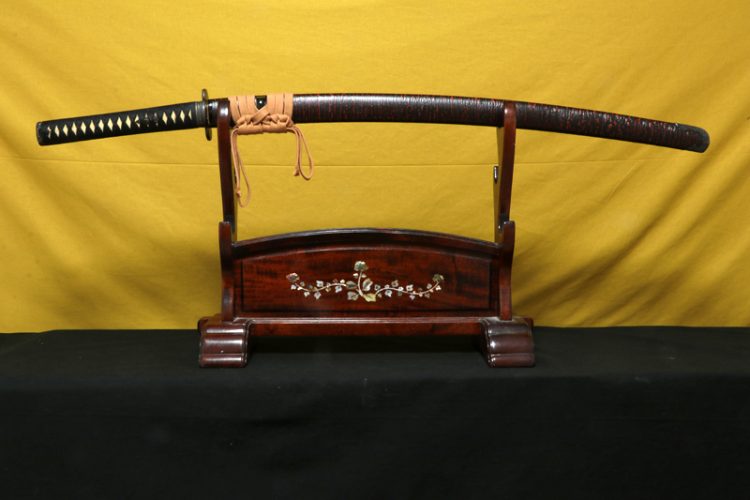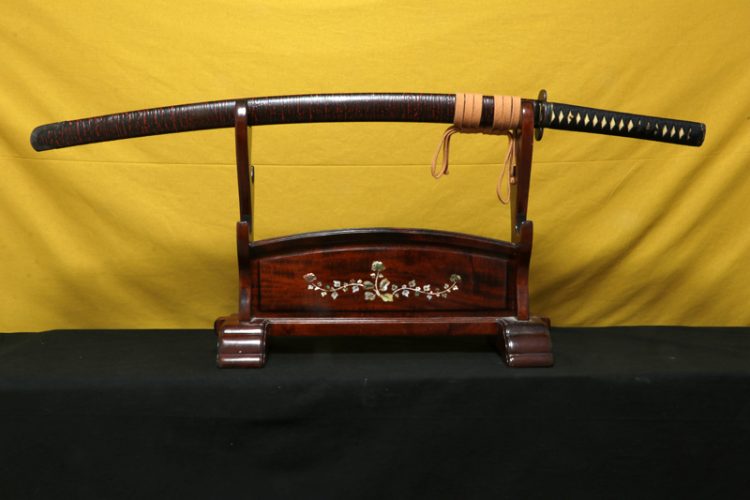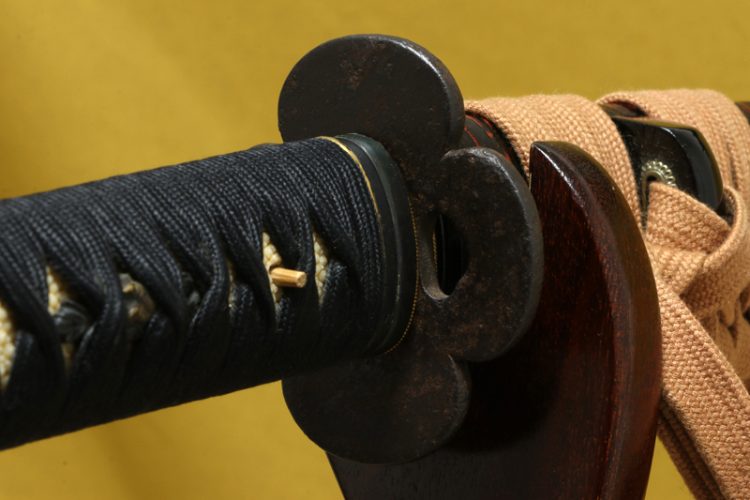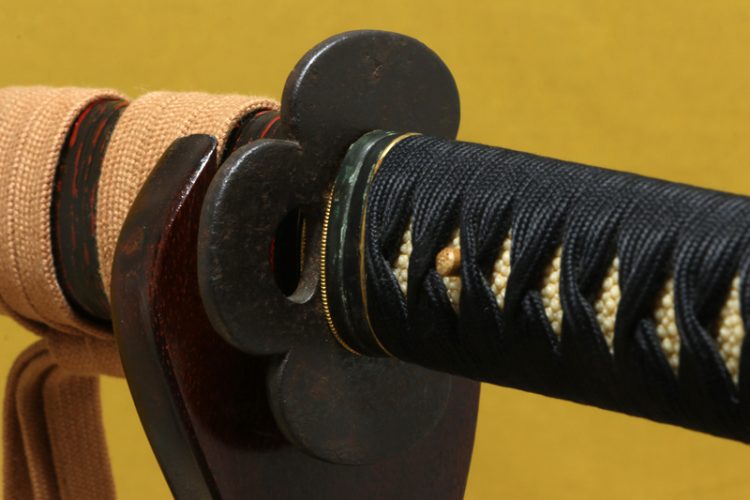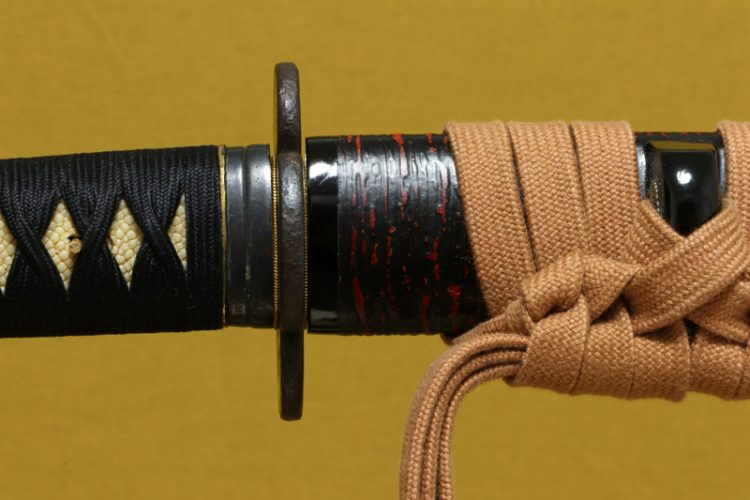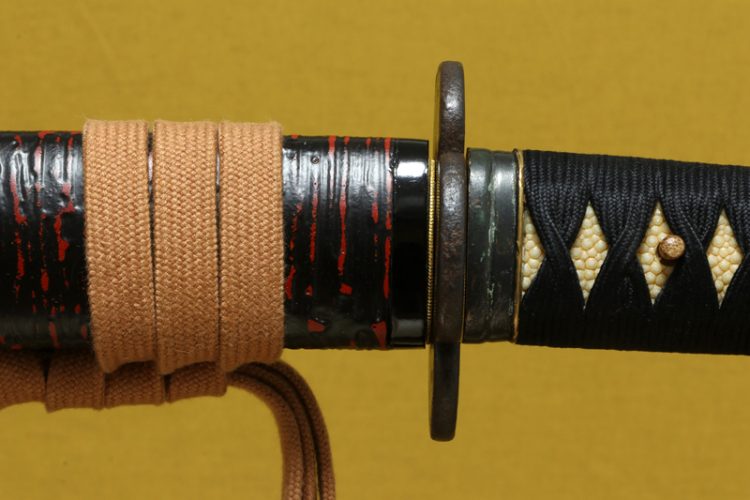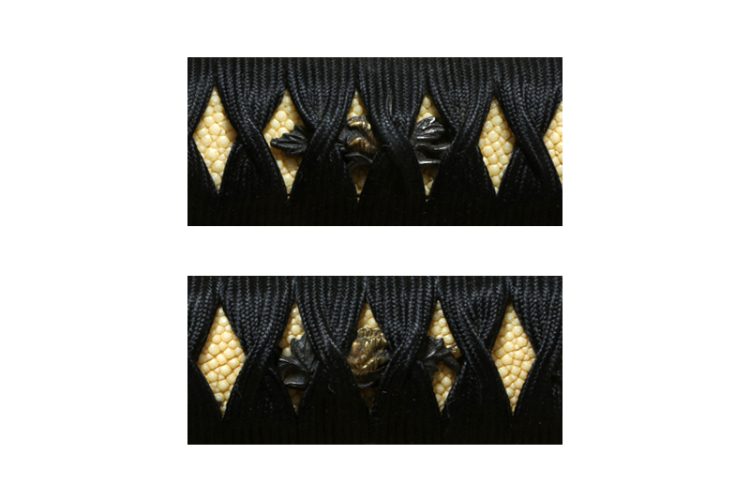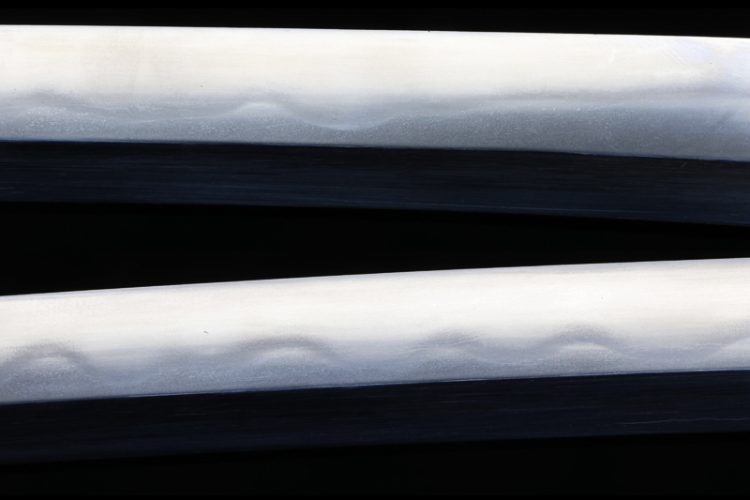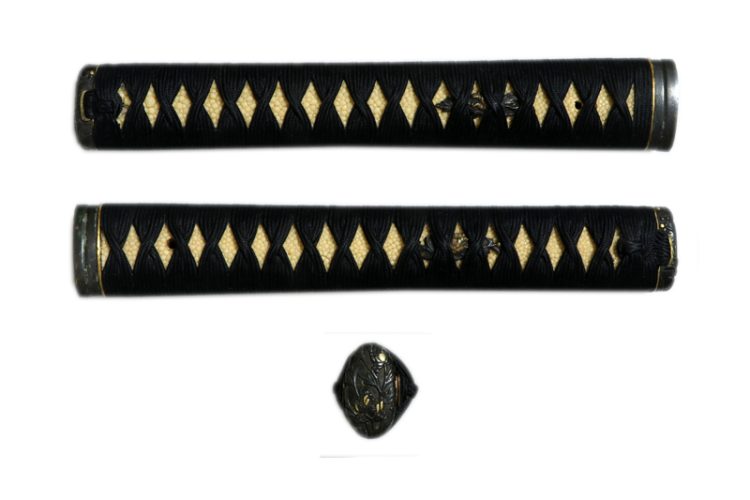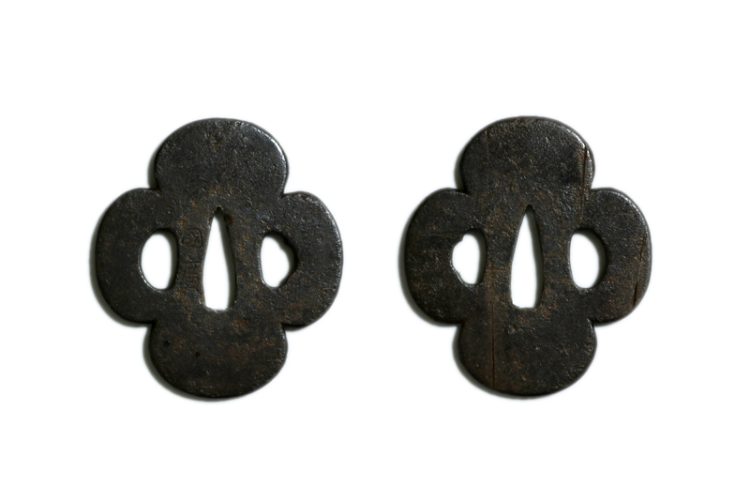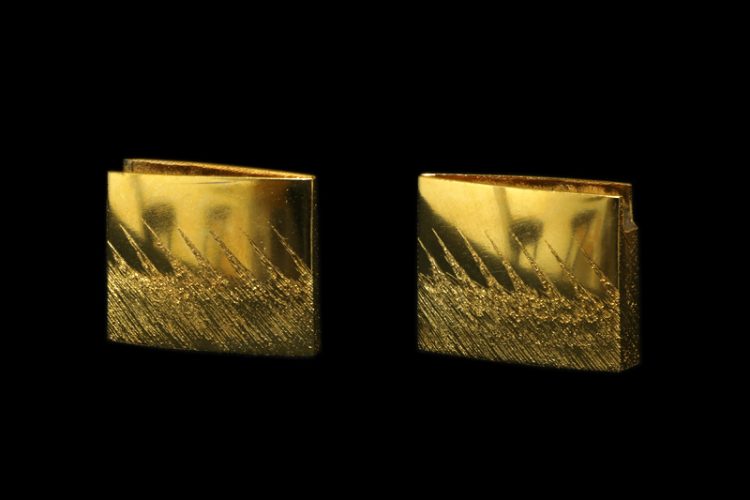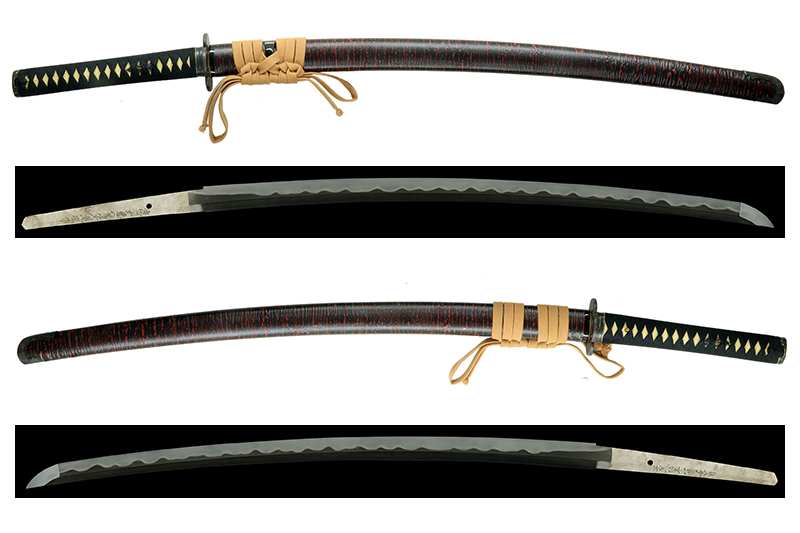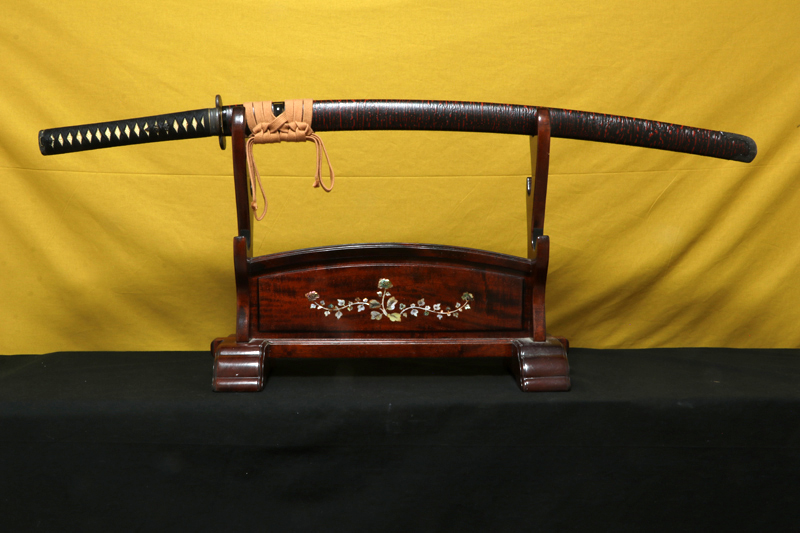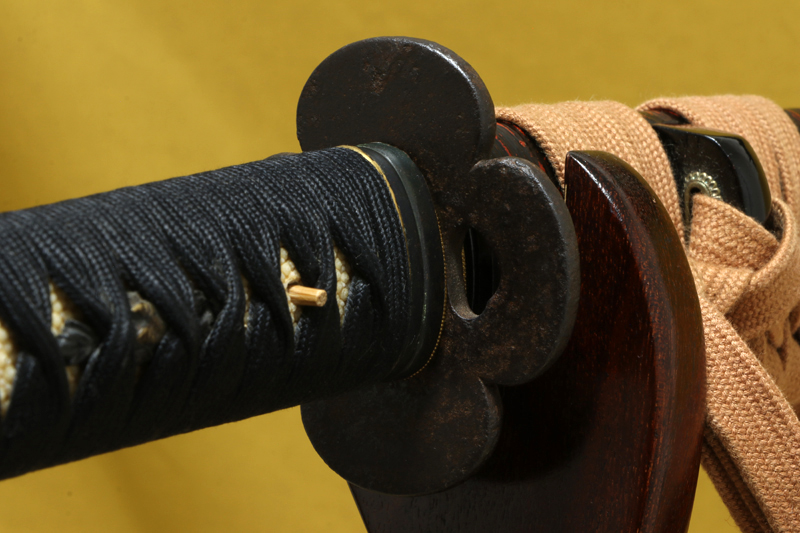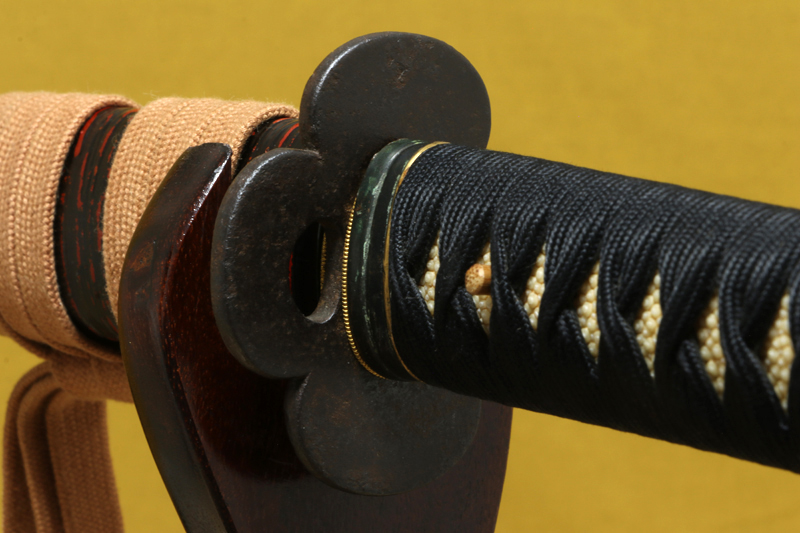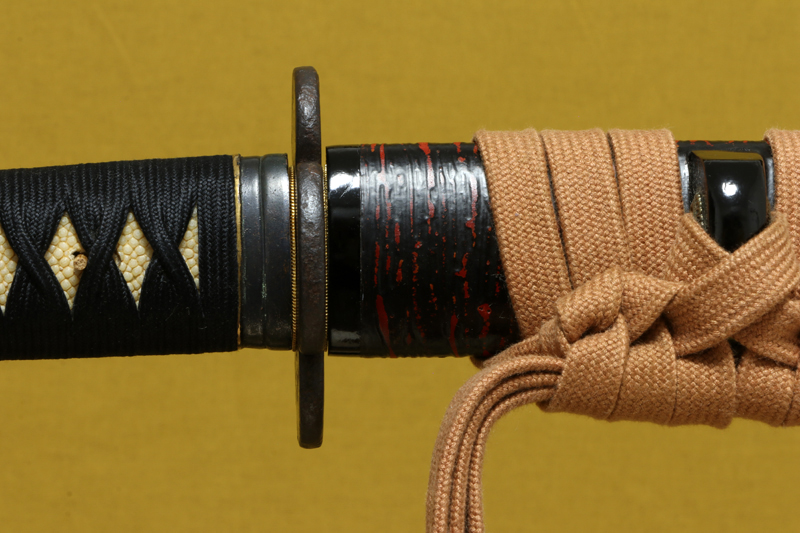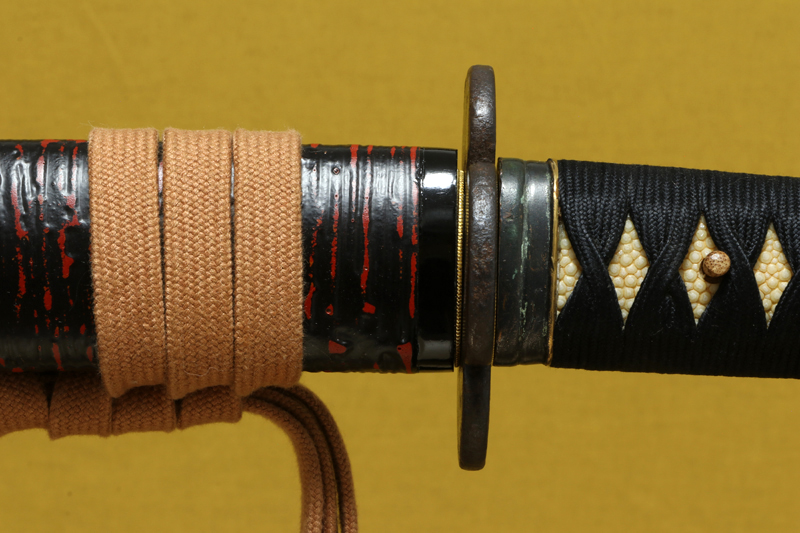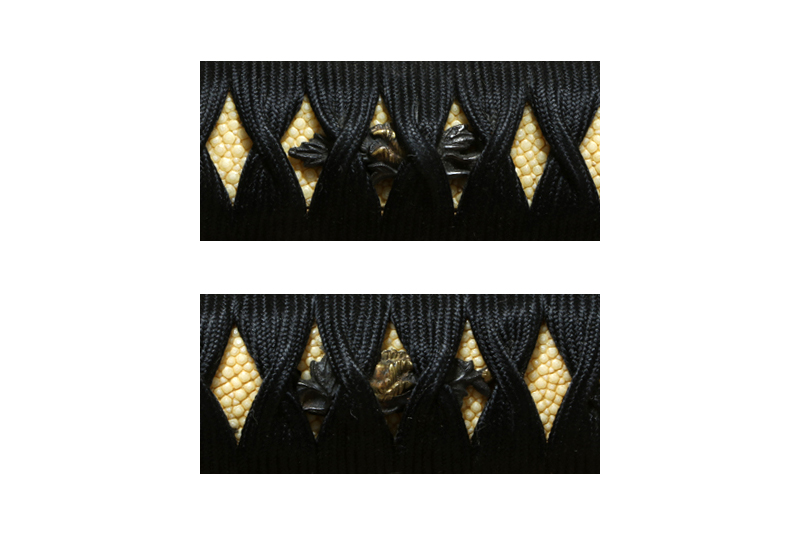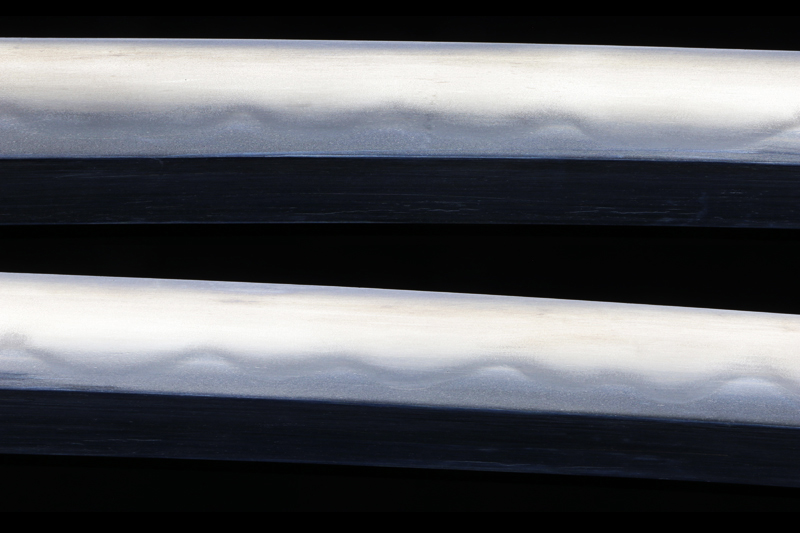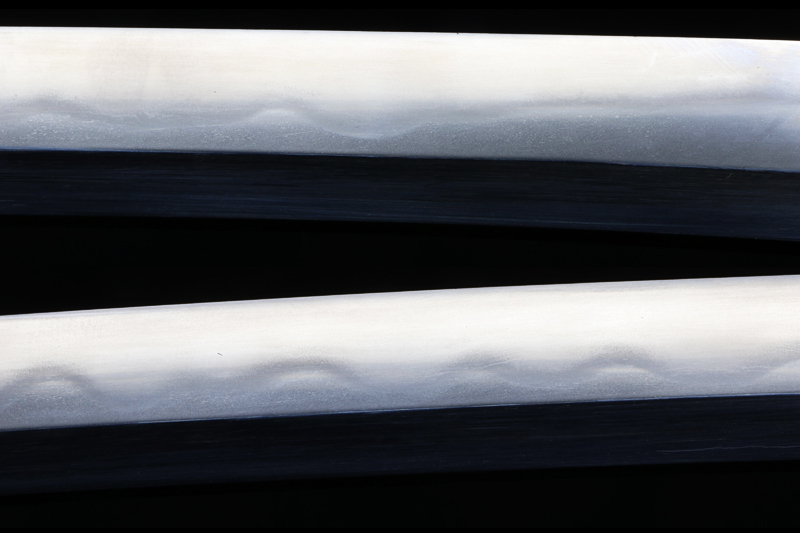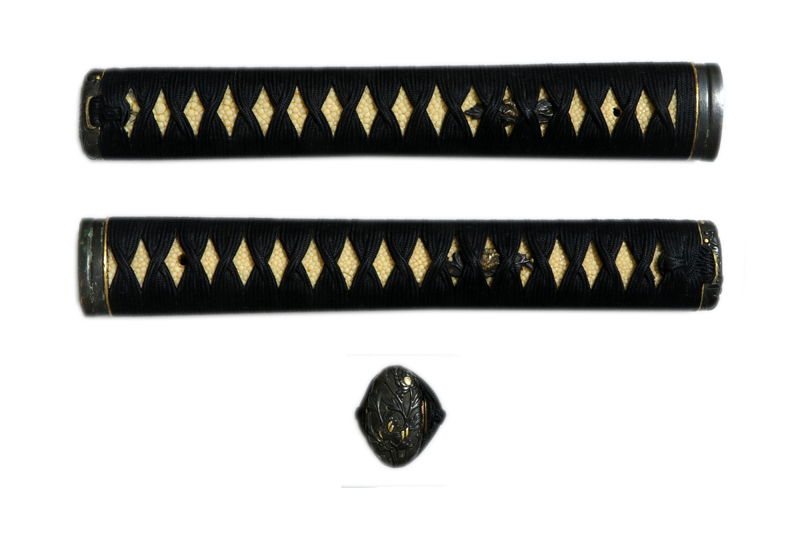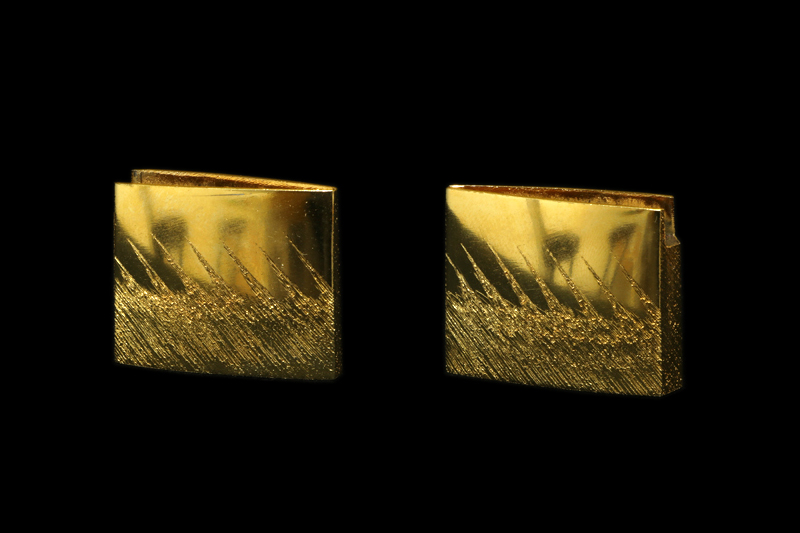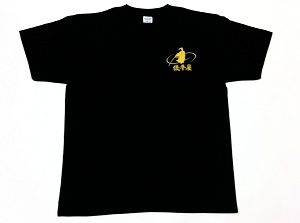説明
「刀姿 sword figure」
鎬造り庵棟、身幅太く重尋常、鳥居反りで中峰。茎は生で鷹の羽鑢がかかり、茎尻は入山形。
「地鉄 jigane」
地鉄は小板目肌が良く詰み、地沸厚く付く。
「刃紋 hamon」
刃紋は濤乱刃(とうらんば)で、刃緑沸が厚く付き砂流しかかり、刃中は金筋が盛んに入る。釯子は乱れ込み掃き掛け小丸に返る。
「特徴 detailed」
兼圀刀匠(本名:尾川邦彦)は、大正14年(1925年)1月25日に生まれました。昭和14年に尾川兼國刀剣鍛錬所に入門し、鍛刀の修業を始めます。昭和17年から昭和19年にかけて、千葉刀剣製作所で活動し、全国最年少で陸軍受命刀匠となり、初銘を「圀忠」と名乗りました。また、自ら中国戦線に赴くこともありました。
終戦後は、農業、養鶏、洋食器のナイフ研磨など様々な職業に従事しましたが、日々の仕事をこなしながらも、日本刀制作への熱い情熱を絶やすことはありませんでした。
47歳の時、兼圀氏は再び刀匠の道に進む決意をします。しかし、戦火によって受命刀匠の証明書を失い、それまでの実績を証明するものが一切ありませんでした。戦後の日本で刀を作るには、文化庁の認可が必要であり、それには最低5年間、刀匠の下で弟子入りする必要がありました。兼圀氏は原点に立ち返り、昭和47年に金子孫六(兼元)に入門。52歳で再び刀匠としての認可を得ました。
昭和52年には作刀承認を受け、同年、岐阜県関市武芸町八幡に工房を設立して独立します。その後の兼圀氏の活躍は目覚ましく、平成7年以降、新作名刀展で数々の賞を連続受賞しました。平成18年には、刀匠界で人間国宝に次ぐ名誉とされる「無鑑査」に認定され、平成20年には岐阜県重要無形文化財保持者として認定される栄誉を受けました。80歳を超えても、実子である二代兼国とともに武芸八幡町で槌音を響かせていましたが、平成24年11月26日に87歳でご逝去されました。
本作は居合用ではなく、美術刀として作られた一振りです。そのため、身幅が広く豪壮な刀姿をしており、兼圀刀匠が得意とする見事な濤乱刃(丁子乱れ刃)が焼き上げられています。兼圀刀匠の作品で元幅が3.5cm以上の刀は非常に稀で、貴重なものです。居合などでは使用されていませんが、試斬には最適な一振りといえるでしょう。
Swordsmith Kanekuni, whose real name was Kunihiko Ogawa, was born on January 25, 1925 (Taisho 14). In 1939, he began his apprenticeship at the Ogawa Kanekuni Swordsmithing Workshop. Between 1942 and 1944, he worked at the Chiba Sword Production Workshop, where he became the youngest officially appointed swordsmith for the Japanese Army, using the initial name “Kunitada.” He even participated in the Chinese front during the war.
After the war, he pursued various occupations, including farming, poultry farming, and knife polishing for Western-style cutlery. Despite his daily responsibilities, his passion for sword-making never waned.
At the age of 47, Kanekuni decided to return to the path of a swordsmith. However, his certification as an officially appointed swordsmith had been lost in the fires of war, leaving no proof of his achievements. To make swords in post-war Japan, permission from the Agency for Cultural Affairs was required, which necessitated at least five years of apprenticeship under an existing swordsmith. Returning to his roots, Kanekuni apprenticed under Kaneko Magoroku (Kanemoto) in 1972 and regained his license at the age of 52.
In 1977, he received approval to forge swords and established his workshop in Muge-cho Hachiman, Seki City, Gifu Prefecture. Kanekuni’s subsequent career was remarkable. From 1995 onward, he won numerous awards at the New Sword Exhibition. In 2006, he achieved the prestigious status of Mukansa (exempt from appraisal), a title regarded as second only to Living National Treasure in the swordsmithing world. In 2008, he was recognized as a Gifu Prefecture Important Intangible Cultural Property holder. Despite being over 80 years old, he continued forging swords in his Muge Hachiman workshop with his son, Kanekuni II, until his passing on November 26, 2012, at the age of 87.
This piece was crafted as an art sword, not for iaido. It features a wide, powerful blade with a magnificent and expertly executed choji-midare hamon (clove-patterned temper line), a hallmark of Kanekuni’s skill. Swords by Kanekuni with a blade width exceeding 3.5 cm are rare and highly valuable. While unused in iaido or similar practices, this sword would be well-suited for tameshigiri (test cutting).
「拵」
拵は流石に居合等では未使用なので、コンディションほ良いです。
ハバキ(habaki) :銀無垢一重金鍍金の腰祐乗。
鍔(tsuba) :鉄地木瓜形刀匠鍔(銘:國廣、江戸時代の物)。
縁頭(futikasira):素銅地肥後、頭は素銅地蓮の図。
鐺(kojiri):肥後鉄地金銀布目象嵌藤の図。
目貫(menuki) :山椒の図。
柄(tsuka) :鮫は親粒が付く。柄巻きは正絹黒の諸撮み巻き。
鐺(kojiri) : 素銅地釣針形鐺。
鞘(saya) :暗朱に黒の縦模様の変わり塗り。
「刀剣の状態 condition of blade」
研:良好です。
傷:欠点に成るような傷は有りません。




